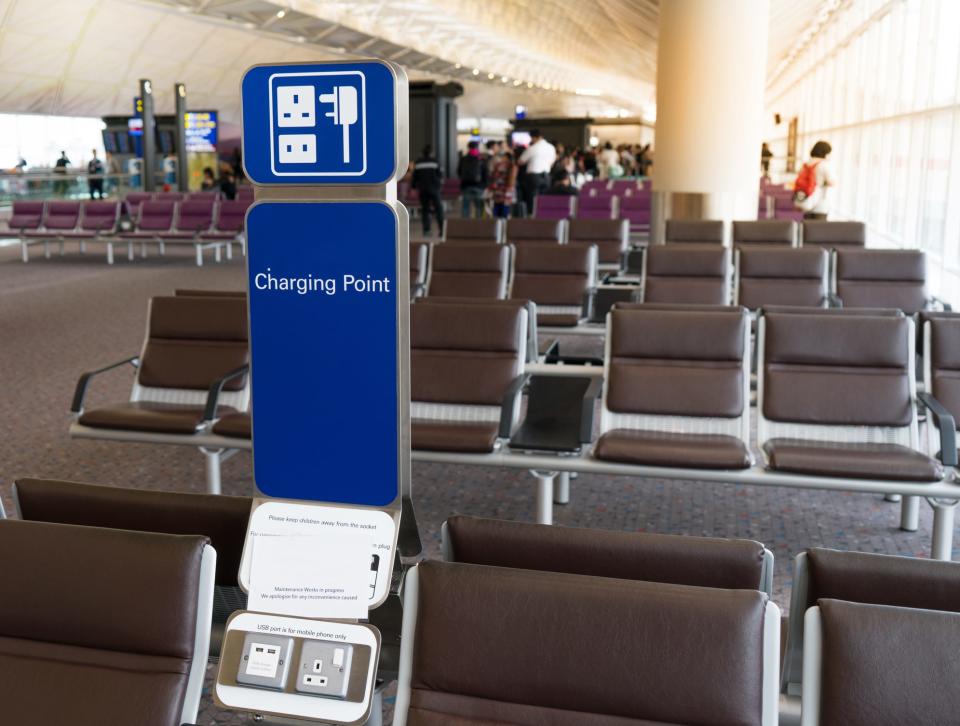5 smartphone security fixes to keep your data safe from hackers, scammers and advertisers
Go anywhere online and it feels like someone is watching. That's because, well, they are.
Did you know there’s a secret mobile advertiser ID on your smartphone that knows where you live and what you've shopped for online recently? It can easily be traced directly to you and reveals things like your physical address and IP address.
And that's just one of many trackers, IDs, maps, and settings collecting your info. More often than not, this data is packaged up and sold to the highest bidder. (Sorry, you don’t get a cut.)
If you want to get serious about security, you'll have to go beyond the usual steps.
1. Turn on USB restricted mode
Ever charge your Apple device in a public place, on a plane or at work? You need to turn on USB restricted mode. It helps to prevent hackers from "juice jacking" your device by installing malware or stealing information through the USB charging port.
How to do it: To turn on USB Restricted Mode, select Settings > Face ID & Passcode > type in your passcode. Scroll down to the section called “Allow Access When Locked,” and make sure the option called “USB Accessories” is toggled off.

Public charging stations at places like airports and coffee shops are handy but they also put your data at risk. If you're going to be out long enough for your device to run out of power, consider getting your own external power bank and juicing it before leaving your home. If you must use a public charging station, think about picking up a USB data blocker that stops malware from entering your device or bring along your own external battery charger.
2. Auto-erase data

Iphone users should also enable Erase Data. With this option on, all data is wiped after 10 failed passcode attempts, which makes it improbable that someone can force their way into your phone.
How to do it: Select Settings > Face ID & Passcode > type in your passcode. At the bottom of the menu, you’ll see “Erase Data.” Toggle the button to the right to enable this setting.
Warning: If you enable the "Erase Data" feature and have kids, it’s vital you back up your device regularly. Otherwise, you could lose everything if a little one gets your phone and tries to unlock it unsuccessfully more than 10 times.
To ensure your iCloud backups are on, go to Settings > [your name] > iCloud > iCloud Backup. Turn on iCloud Backup. To perform a manual backup, tap Back Up Now.
► Got an Apple device? Here's why you should update your software now
3. Stop snoops
Passcode or password protecting your phone is essential, but did you know you can do the same for individual apps? It's clear-cut with Android and a little more involved if you have an iPhone.
How to do it: For Android, third-party apps like Smart AppLock allow you to use your fingerprint or choose between pattern locks or a PIN to restrict access. Smart AppLock also sends you break-in alerts when someone tries to open an app with an invalid code. Handy! Tap or click here for direct download links and other options.
If you have an iPhone, your best bet is a little-known feature called Guided Access. It takes a few steps to get this up and running. Once you do, the Guided Access start screen will come up, allowing you to disable or lock particular parts of your screen or the entire screen. Locking the entire screen will be the simplest way to lock an app. Tap or click for complete steps and another trick to limit app access, screen time limits.
4. Wipe out nosy apps
These days, almost all apps track at least a few things about you. The best thing you can do to keep your data private is avoid sharing it. Yes, apps collect info directly from your device, but you can make a dent by leaving as many fields blank on your profiles as possible or even including fake info.
Give your smartphone a privacy checkup to make sure apps aren’t collecting data they don’t need.
How to do it:
On an iPhone:
Open Settings, then scroll down and tap the Privacy icon.
Select a permission, like Calendar, Location Services, or Camera.
Choose which apps should have access to that permission and remove the permissions for the apps you don’t want to have access.
On an Android phone:
Open Settings, then tap Apps & notifications, followed by Advanced App permissions.
Select a permission and choose which apps should have access to that permission.
Remove permissions for any apps you don’t want keeping tabs.
► The more you know: 10 apps you should delete from your phone now
5. Increase your password strength
You know you need strong passwords, but the lure of easy-to-remember ones you have used many times is strong. Don’t just hope for the best. Find your bad passwords and banish them for good.
Keychain password reuse auditing (for iOS): Safari stores your passwords in Keychain, which you can access from your Apple devices or iCloud. Your passwords are checked against a list of breached passwords. This feature is turned on by default with iOS 14.
Go to Settings > Passwords and look under “Security Recommendations” to see if any of your passwords have been compromised. If so, you’ll get a prompt to update your password with a stronger one.
Google Password Checkup for Android: Chrome’s Password Checkup feature is built into the Password Manager. Here you can see if your passwords have been compromised – and which ones are weak and need to be changed. Go to passwords.google.com and select Password Checkup > Check Passwords.
Every year, a list of the most-used bad passwords is released, and every year, I shake my head. See if any of yours made the top 20. If they did, change them!
Bonus Tip: Is your boss watching your every move?
Check out my podcast “Kim Komando Explains” on Apple, Google Podcasts, or your favorite podcast player.
Thanks to invasive software, companies can track your every click, keystroke and movement – even outside of work hours. In this episode, security researcher Cooper Quintin reveals how so-called bossware works, what it tracks and how badly things can go when organizations use it to see every single thing you're doing.
What digital lifestyle questions do you have? Call Kim's national radio show and tap or click here to find it on your local radio station. You can listen to or watch "The Kim Komando Show" on your phone, tablet, television, or computer. Or check out Kim's free podcasts.
Learn about all the latest technology on The Kim Komando Show, the nation's largest weekend radio talk show. Kim takes calls and dispenses advice on today's digital lifestyle, from smartphones and tablets to online privacy and data hacks. For her daily tips, free newsletters and more, visit her website at Komando.com.
The views and opinions expressed in this column are the author’s and do not necessarily reflect those of USA TODAY.
This article originally appeared on USA TODAY: Smartphone security: 5 ways to keep yours safe from hackers, scammers

